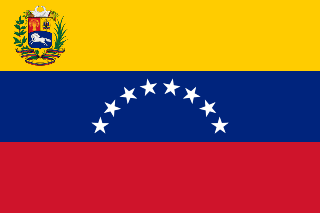
The Polyporaceae are a family of poroid fungi belonging to the Basidiomycota. The flesh of their fruit bodies varies from soft to very tough. Most members of this family have their hymenium in vertical pores on the underside of the caps, but some of them have gills or gill-like structures. Many species are brackets, but others have a definite stipe – for example, Polyporus badius.

The Phanerochaetaceae are a family of mostly crust fungi in the order Polyporales.

Bjerkandera is a genus of seven species of wood-rotting fungi in the family Meruliaceae.

Loweomyces is a genus of six species of poroid fungi in the family Steccherinaceae.

Aurantiporus is a genus of poroid fungi in the family Meruliaceae. Circumscribed by American mycologist William Alphonso Murrill in 1905, the genus contains five species found mostly in northern temperate regions. Molecular analysis of several Aurantiporus species suggests that the genus is not monophyletic, but some other related polypore species need to be sequenced and studied before appropriate taxonomic changes can be made. In 2018, Viktor Papp and Bálint Dima proposed a new genus Odoria to contain Aurantiporus alborubescens based on multigene phylogenetic analyses. The generic name is derived from the Latin aurantius ("orange") and the Ancient Greek πόρος (pore).

Skeletocutis is a genus of about 40 species of poroid fungi in the family Polyporaceae. The genus has a cosmopolitan distribution, although most species are found in the Northern Hemisphere. Skeletocutis causes a white rot in a diverse array of woody substrates. Their fruit bodies grow as a crust on the surface of the decaying wood. Sometimes the edges of the crust are turned outward to form rudimentary bracket-like caps.

Tyromyces is a genus of poroid fungi in the family Polyporaceae. It was circumscribed by mycologist Petter Karsten in 1881. The type species is the widely distributed Tyromyces chioneus, commonly known as the white cheese polypore. The phylogenetic position of Tyromyces within the Polyporales is uncertain, but it appears that it does not belong to the "core polyporoid clade". Tyromyces is polyphyletic as it is currently circumscribed, and has been described as "a dumping place for monomitic white-rot species with thin-walled spores."
Obba is a genus of three species of poroid, white rot crust fungi in the family Gelatoporiaceae. The genome sequence of the type species, O. rivulosa, was reported in 2016.
Sebipora is a fungal genus in the family Gelatoporiaceae. It was circumscribed in 2012 by mycologist Otto Miettinen to contain the crust fungus Sebipora aquosa, its single species. This fungus is found in low altitudes in Sumatra and New Guinea, where it causes a white rot on dead angiosperm wood, particularly fallen tree trunks, and frequently on burned wood.

Loweomyces fractipes is a species of poroid fungus in the family Steccherinaceae, and the type species of the genus Loweomyces. It is a widely distributed species, found in North America, Europe, Central America, South America, and Korea.
Yuchengia is a fungal genus in the family Polyporaceae. It is a monotypic genus, containing the single species Yuchengia narymica, a crust fungus formerly placed in the genus Perenniporia and originally described as Trametes narymica by Czech mycologist Albert Pilát.

The Gelatoporiaceae are a small family of crust fungi in the order Polyporales. The family was circumscribed in 2017 by mycologists Otto Miettinen, Alfredo Justo and David Hibbett to contain the type genus Gelatoporia and three other related genera, Cinereomyces, Obba, and Sebipora.
Leifiporia is a genus of two species of poroid white rot crust fungi in the family Polyporaceae. The genus was circumscribed by Chinese mycologists in 2016 to accommodate the type species Leifiporia rhizomorpha.
Microporellus iguazuensis is a species of poroid fungus in the family Polyporaceae. Found in South America, it was described as a new species in 1987 by mycologist Mario Rajchenberg. The type was collected in Misiones Province, Argentina, in the Iguazú National Park. Characteristics of the fungus include the fruit body comprising a lateral stipe and multiple fan- or spoon-shaped caps. Microscopic characters include the dimitic hyphal system, relatively large basidia measuring 23–31 by 8–9 μm, and large ellipsoid to egg-shaped spores measuring 7–9 by 5–6 μm. The fungus was redescribed 23 years later after it was found in a polypore survey in the Atlantic rainforest of Rio Grande do Sul, southern Brazil. There it was growing on the ground amongst leaf litter, connected to roots of a living tree of Ocotea indecora.
Skeletocutis stramentica is a species of poroid fungus in the family Polyporaceae that is found in New Zealand.

The Irpicaceae are a family of mostly polypores and crust fungi in the order Polyporales.
Gloeoporus africanus is a species of crust fungus in the family Irpicaceae. Found in Africa, it was described as a new species in 2018 by Paul Jung and Young Wood Lim. The type collection was made in Bwindi Impenetrable National Park, Uganda, where it was found growing on a fallen branch. It is somewhat similar in appearance to Bjerkandera adusta, but is distinguished from that fungus by its angular pores and the white edges of the actively growing pore surface. G. africanus has a monomitic hyphal system, and its generative hyphae have clamp connections. Its spores are sausage-shaped (allantoid), measuring 3.8–4.2 by 0.6–0.7 μm.
Gloeoporus orientalis is a species of crust fungus in the family Irpicaceae. Found in East Asia, it was described as a new species in 2018 by Paul Jung and Young Wood Lim. The type collection was made in Geojedo, Korea, where it was found growing on a fallen angiosperm trunk.















